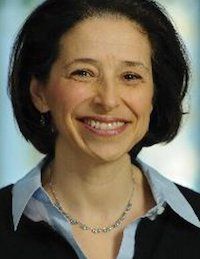Perceptions of a Career in Cardiology Differ by Gender
A survey of internal medicine residents found that differing professional needs and perceptions of the field of cardiology were strongly associated with decisions to pursue or avoid cardiology careers.

Pamela S. Douglas, MD
Internal medicine residents’ professional development preferences and perceptions of the field of cardiology were strongly associated with the decision to seek or avoid a career in cardiology for both women and men, according to a national survey.
“[D]espite the fact that approximately half of medical school classes are female, women constitute only 21% of general cardiology trainees, 7.2% of interventional fellows, and 6% of electrophysiology fellows. Women account for 13.2% of cardiologists in practice and only 4% of interventional cardiologists,” wrote Anne B. Curtis, MD, and Fatima Rodriguez, MD in a commentary on the study. "Why is our specialty losing so much talent?"
Results of the survey, conducted by the American College of Cardiology Task Force on Diversity and Inclusion and American College of Cardiology Women in Cardiology Council, showed that trainees who did not go into cardiology and women rated work-life balance more highly than trainees who did become cardiologists and men, who valued the professional advantages available in the cardiology field.
Additionally, women and future noncardiologists had more negative perceptions of cardiology than the surveyed men and future cardiologists.
“There were differences in almost every perception of cardiology between trainees who chose cardiology for their fellowship and those who did not,” wrote study authors Pamela S. Douglas, MD, Anne K. Rzeszut, MA, C. Noel Bairey Merz, MD, et al. “Although it is impossible to determine whether these differences resulted from or drove trainees’ choices, it is likely that such stereotypes can and do shape decisions regarding cardiology culture and fit, even without conscious awareness.”
The researchers contacted 4850 individuals, of which 1123 internal medicine (IM) residents from 198 programs participated in the survey. Participants included 625 men (55.8% of the total) and largely self-identified as either white (n=629; 56.7%) or Asian (n=328; 29.6%).
Of those who participated, 267 (23.9%) had selected cardiology, intervention, or electrophysiology fellowships, and an additional 312 (27.9%) had considered cardiology.
Study participants rated 38 professional development needs and 19 perceptions of cardiology on a Likert scale of 1 (agreement) to 5 (disagreement).
Researchers found that women valued stable hours (men: mean score, 3.32; women: 3.58; P <.001), family friendliness (men: 3.45; women: 3.73; P <.001), female friendliness (men: 1.98; women: 3.17; P < 001), patient focus (men: 3.56; women: 3.73; P = .001), and positive role models (men: 4.33; women: 4.46; P <.001) more highly when compared to men.
When examining perceptions about the field of cardiology, researchers found differences between men and women as well. Women were more likely to associate cardiology with interference with family life (men: mean score, 3.65; women: 3.92; P <.001), and a lack of diversity (men: mean score, 3.03; women: 3.17; P = .03). Conversely, men found cardiology more intellectually stimulating (men: mean score, 4.07; women: 3.74; P <.001) and perceived it to be a field with positive role models (men: mean score, 3.79; women: 3.66; P = .02).
“It does not take much effort to recognize that this dissonance between professional preferences and the perceptions of the field of cardiology may well drive excellent candidates to choose other fields,” said Curtis and Rodriguez.
Indeed, while the study authors did not examine causation, they showed that the IM residents who did not choose cardiology were more likely to perceive interference with family life (those who never considered cardiology: 3.84; those who considered cardiology: 3.86; current cardiologists: 3.53; P = .001) and challenges of having children during cardiology fellowship (those who never considered cardiology: 3.95; those who considered cardiology: 3.96; current cardiologists: 3.56; P <.001).
The authors’ discussion turned toward solutions for the field’s negative reputation among young doctors, particularly women.
“Efforts to increase the capacity and diversity of the future cardiology workforce should address the apparent misalignment of cardiology culture with trainees’ professional needs,” concluded Douglas, et al.
Commentary authors suggested a variety of interventions to improve the representation of women in cardiology, including institutional attention to the problem, programs providing role models and mentors to medical students and residents, and a focus on the benefits of diversity in cardiology.
“[B]oth conscious and unconscious barriers to women in cardiology must be recognized and addressed,” said Curtis and Rodriguez. “The career satisfaction of our female trainees and the interests of our patients deserve no less.”
The study, “Career Preferences and Perceptions of Cardiology Among US Internal Medicine Trainees,” was published online in JAMA Cardiology.